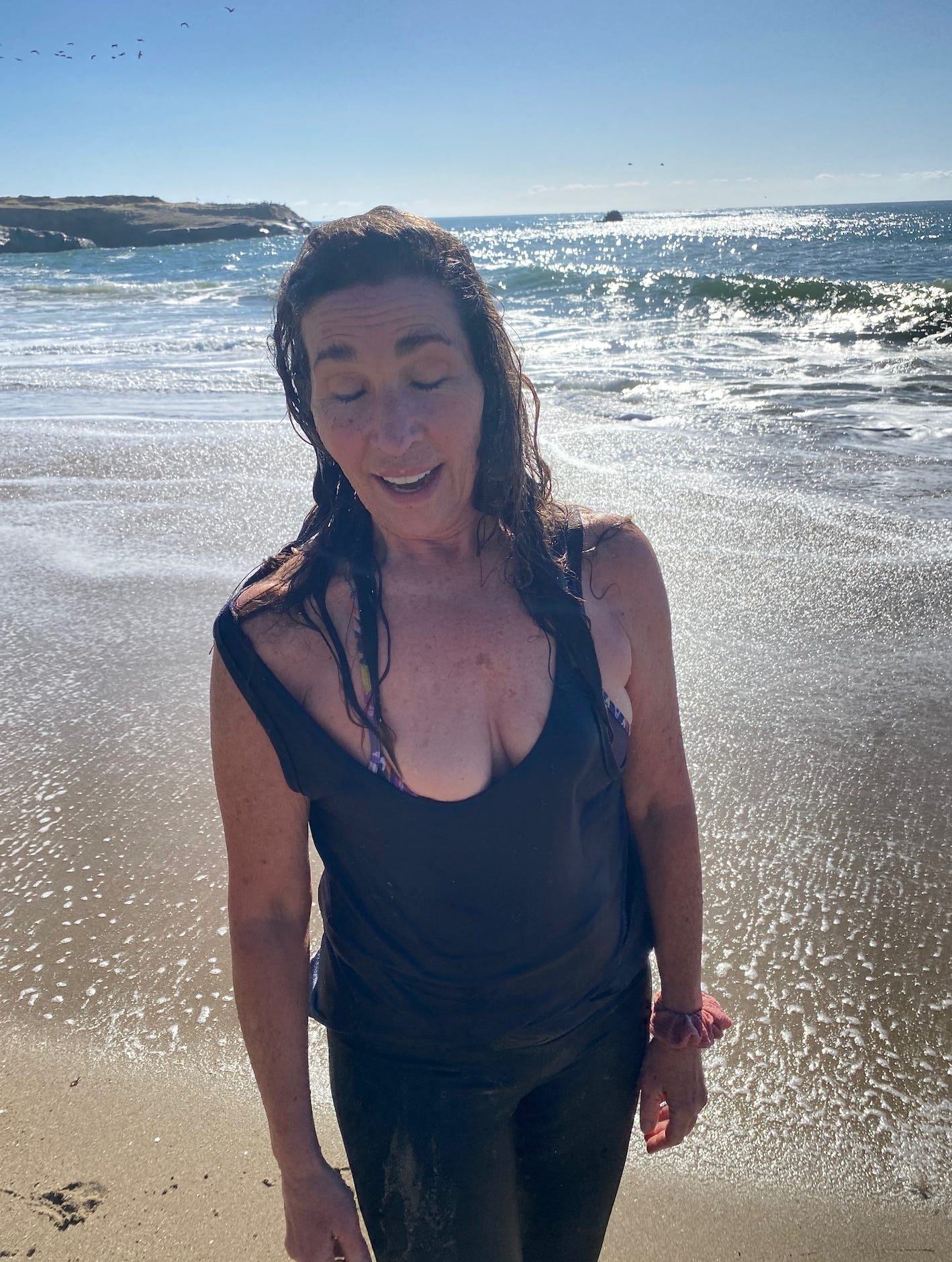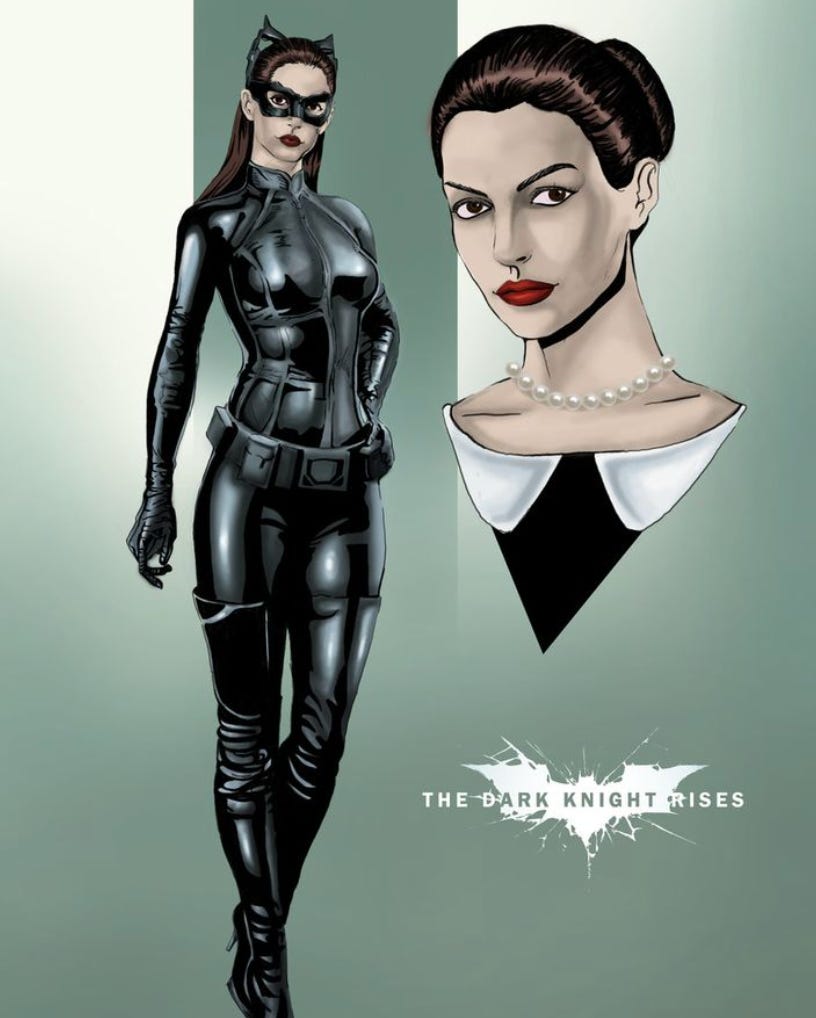Beyond the Veil: Unleashing Your Alter Ego
Wonder Woman is arguably the most famous female alter-ego superhero out there—envisioned as the ideal woman to rule the world with strength, beauty and goodness.
The Wonder Woman character was created by William Moulton Marston, who envisioned her as the ideal love leader and the type of woman who should rule the world with the strength of Superman and the appeal of a good and beautiful woman. The comic book was created partly in response to the prominence of male superheroes at the time (Superman, Batman, Captain America) Marston hoped his female hero would inspire young kids to become leaders through articles and features celebrating woman empowerment. There were stories about the career paths of famous and accomplished ladies called the Wonder Women of History.
Since her debut in 1941, Wonder Woman has been a beacon of strength for so many people. Learn about her history and the live-action films starring Gal Gadot.

Welcome to the Salty Crone special 67 birthday (to me) —Halloween edition. I’m delighted you’re here. If you enjoy reading this, stay with me, and click the ❤️ button on this post and comment so more people can discover it on Substack. Thank you.
Let’s explore alter egos—an alter ego is an aspect of who we are not easily expressed in day-to-day life—that exhibits different traits, desires, or behaviors—a second half or alternative persona. When social norms relax, you can adopt personas that reflect hidden aspects, fantasies, or aspirations without judgment. As creative beings, we shape-shift daily: from passive or shy to a fiery dragon, fearless warrior, master mom, or seductive dancer—mirroring subconscious desires or emotions. Personas express hidden dimensions of the psyche, like authority, laziness, or silliness, in ways that can liberate.
Halloween costumes draw from mythology, pop culture, and archetypal figures—witches, goddesses, angels, sinners, animals, and monsters—characters that embody duality and transformation.
At our childhood house at #373, a thunderous knock shook the front door. I peeked through the curtain, my heart pounding. A hunched figure in a dark coat and floppy hat lurked on our dimly lit porch. “Trick or treat,” the voice growled—odd, deep, and raspy. My sugar-crashed siblings were conked out upstairs. The door creaked open, and the figure shuffled in.
“Trick or treat,” it repeated louder this time. I bolted for my mom, but halfway up the stairs, I tripped. A hand clamped around my ankle. The grip was strong—I kicked and wriggled. No use. I braced myself for the worst when the voice suddenly dropped the menace. “It’s me. I was trying to be scary.” I turned as the hat came off, revealing the strawberry-blond curls of my mother.
I lay there, stunned. Why in the world would she think that was funny? Maybe, for one night, my mom wanted a taste of what it’s like to be a monster—or maybe she just needed a break from single parenting eight children and an abusive husband that she was not allowed to divorce until she did. She rose from being weary to the bone, quiet, and careful took judo lessons and had my father removed. For a Catholic woman in the 60’s this was big and scary.

BDSM, which stands for Bondage and Discipline, Dominance and Submission, Sadism, and Masochism, offers an adult avenue for unleashing your alter ego through sexual identities, desires, and power dynamics in a consensual, non-judgmental environment that’s safe, playful, and theatrical. Elaborate costumes aligned with specific roles or sexual identities are encouraged (often provided)—masks, harnesses, corsets, or other fetish wear. Communication, mutual respect, and personal boundaries are essential for participants to tap into hidden or repressed aspects of their emotional bodies and for growth to occur.
If you’re thinking about Fifty Shades of Grey, it’s problematic for portraying non-consensual dynamics, boundaries are often ignored or coerced—similar to themes in the Medusa myth. In contrast, Secretary (2002) offers a portrayal of BDSM evolving through mutual exploration and clear consent. Toward the end, both Maggie Gyllenhaal (a submissive secretary) and James Spader (her dominant boss) begin to understand and respect each other’s needs and boundaries.
If you think Prajna has a personal BDSM story, you’re right but not today.
Our fierce exploration of the portrayal of female characters began with reframing the familiar ‘Myth of Medusa,’ and its many reiterations.
Natalie Haynes states, "The vilified Medusa was like an ancient Beyonce’—getting her revenge on the man who hurt and betrayed her, if by extreme measures… she turns her eye to Medusa, the original monstered woman, who had her hair turned to snakes by Athena as punishment for being raped.1
Athena is noted as a woman who always blames other women for what men do to them. We have to wonder why we are so quick to villanize women in the first place and so easily accept the stories we are told. Medusa’s gaze was said to turn people to stone. This can symbolize the repression of female rage and sexual power under patriarchal control.
Our work involves revolutionizing our perspective of these epic stories, putting women on equal footing with men, and resurrecting and empowering them.

Pioneering photographer Cindy Sherman redefined self-portraiture, transforming herself into unusual, bizarre, and often disturbing alter egos. She questioned identity and self-representation in a media-saturated society. Sherman rose to fame in the early 1980s as part of the Pictures Generation, a group that critiqued mass media through transgressive, confrontational works. Using herself as a blank canvas, she transformed into hyper-real archetypes drawn from movies and magazines—ranging from Hitchcock heroines to freaky clowns and Park Avenue plastic-surgery mavens. Her work often takes a wry, feminist perspective on society. Over time, her characters and disguises have become increasingly colorful, exaggerated, and grotesque, reflecting the shifting impact of mass media on self-image.
"The characters weren’t just airhead actresses... The clothes make them seem a certain way, but when look at their expression— you have to wonder if maybe ‘they’ are not what the clothes communicate"—Cindy Sherman
Similarly, Lynn Hershman Leeson embodied an alter ego named Roberta Breitmore for several years. Through this persona, she documented Roberta's life—complete with IDs, appointments, and real-world interactions—using the project to explore identity, gender, and societal pressures. Leeson's extended performance highlighted the tension between public image and personal identity, commenting on how societal expectations shape behavior, particularly for women.
Another example is Joan Jonas, who, in her work Organic Honey’s Visual Telepathy, uses masks and costumes to embody alternative identities and archetypes. Her persona, Organic Honey, represents personal transformation while critiquing how society homogenizes and stereotypes female identities. This exploration of alter egos and archetypes aligns with Jungian ideas, where different personas express deeper, often collective, aspects of the psyche—such as the "shadow" or "anima"—that remain hidden in ordinary life.
Beyoncé's, Sasha Fierce, reflects the transformative power of alter egos, to embody archetypes of power, sensuality, and control. In an interview with Oprah Winfrey, Beyoncé described how Sasha Fierce helped her tap into a more confident side of herself, "usually when I hear the chords, when I put on my stilettos...Sasha Fierce appears,” she is ready to own the stage with confidence and grace. As she matured, she no longer needed the alter ego to access that part of herself—she merged the two sides of herself into one unified identity.
Selina Kyle and Catwoman is another example of dual identity. Selina is a civilian with a complicated past, often portrayed as a woman seeking redemption while walking a moral tightrope. As Catwoman, she operates on the fringes of legality—both an anti-hero and a thief. Her transformation into Catwoman lets her explore her feline-inspired strength, sensuality, and independence, making her dual identity intriguing and morally ambiguous.
Reclaiming Medusa’s Image
Contemporary feminist readings recast Medusa as a figure of empowerment rather than victimhood. Similarly, dancers using snakes or fire in performance challenge traditional fears and taboos surrounding snakes, sexuality, fire, and safety, turning the dance into a celebration of freedom, fluidity, and embodied wisdom.
In this light, reframing myths; dressing in costumes; earth rituals with fire, water, or wind; drumming ceremonies; recording dreams; and activities that induce altered states of consciousness awaken and reveal archetypes and alter egos, becoming rituals that reconnect us with ancient themes of life, death, sensuality, and transformation. These practices mirror Medusa’s story, inviting us to engage with the tension between fear and fascination, inhibition and experimentation, vulnerability and power.


The use of alter egos reflects the complexity of identity—how we navigate personal expression, desire, paradox, and social expectations. Archetypal psychology, feminist critiques of mythology, and mass media reveal hidden, often suppressed aspects of our collective culture, inviting us to explore new dimensions of being—and to enjoy Halloween.
© Prajna O'Hara 2024
I’d love to hear from you in the comments below:
• Share your alter ego explorations, if you like.
• What is your relationship to the Medusa myth—or any part of this edition?
Join the conversation—your voice, heart, and body matter. I write to harvest meaning and can’t wait to read and respond to you.
Thank you for being part of The Salty Crone community of creative, curious, and soulful humans.
You are always welcome here—and cherished. 💜
Love,
Prajna O’Hara, The Salty Crone
Natalie Haynes, Pandora's Jar: Women in the Greek Myths (2020)
Related Essays:
Can You Do Soft, Slow, Sensuous Things?
Savoring deep satisfaction is erotic power, the most dangerous, radical, and revolutionary thing a woman can do—because she becomes useless to capitalism.
Erotic as Power
"The erotic is a resource within each of us that lies in a deeply female and spiritual plane, firmly rooted in the power of our unexpressed or unrecognized feelings." —Audre Lorde








Hmm, I don’t think I’ve ever really explored an alter ego. Something to think about.
I have an alter ego that is only expressed in secret fantasies where my sexuality comes roaring to the surface. The feelings that accompany her have guilt attached yet not strong enough to stop me from expressing this inner persona in words no others that are physically present in my life have seen. Part of me feels shame I suppose just as you say due to past impressive ideas fed to me about my femininity. Women weren’t allowed the same freedoms males seem to be allowed. With One other part of what you have written I have a slight difference in opinion. “Fifty Shades of Gray” Fifty Shades Darker” and “Fifty Shades Freed” after I have watched them numerous times and have read the books, allowed me to think that Ana was a very strong women with deep seated erotic feelings of her own. I think when she gave her virginity to Christian it was freely given from her. Once Cristian introduced her to the only way he knew about sex she was totally intrigued yet at first did it only to please him and hold onto him. After time together and she showed him a way to stop his sadist behavior she was enjoying her sexual freedom even more than him. Of course on the whole the stories were a bit far fetched, but watching Ana transform into the woman she chose to be fascinated me. I saw her own decisions infused by her strength made her know her own worth more than any other way she would have followed. Of course just my view. All the other analysis you gave about these female roles sounds exactly right to me. You encourage with your writing the nudge inside all of us to be true to every part of us even the alter egos inside. Thank you for this. Recognizing my alter and I are not alone is comforting.